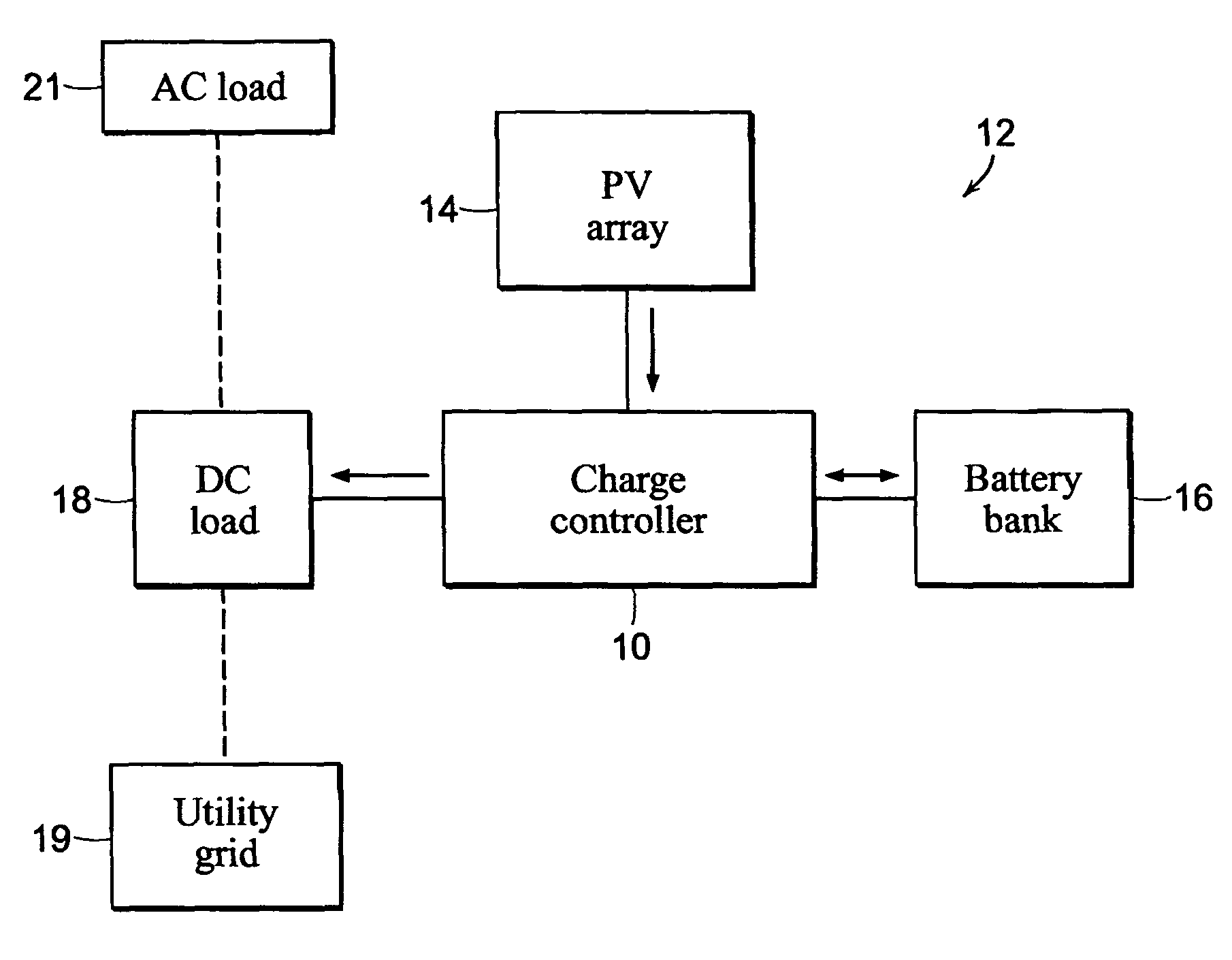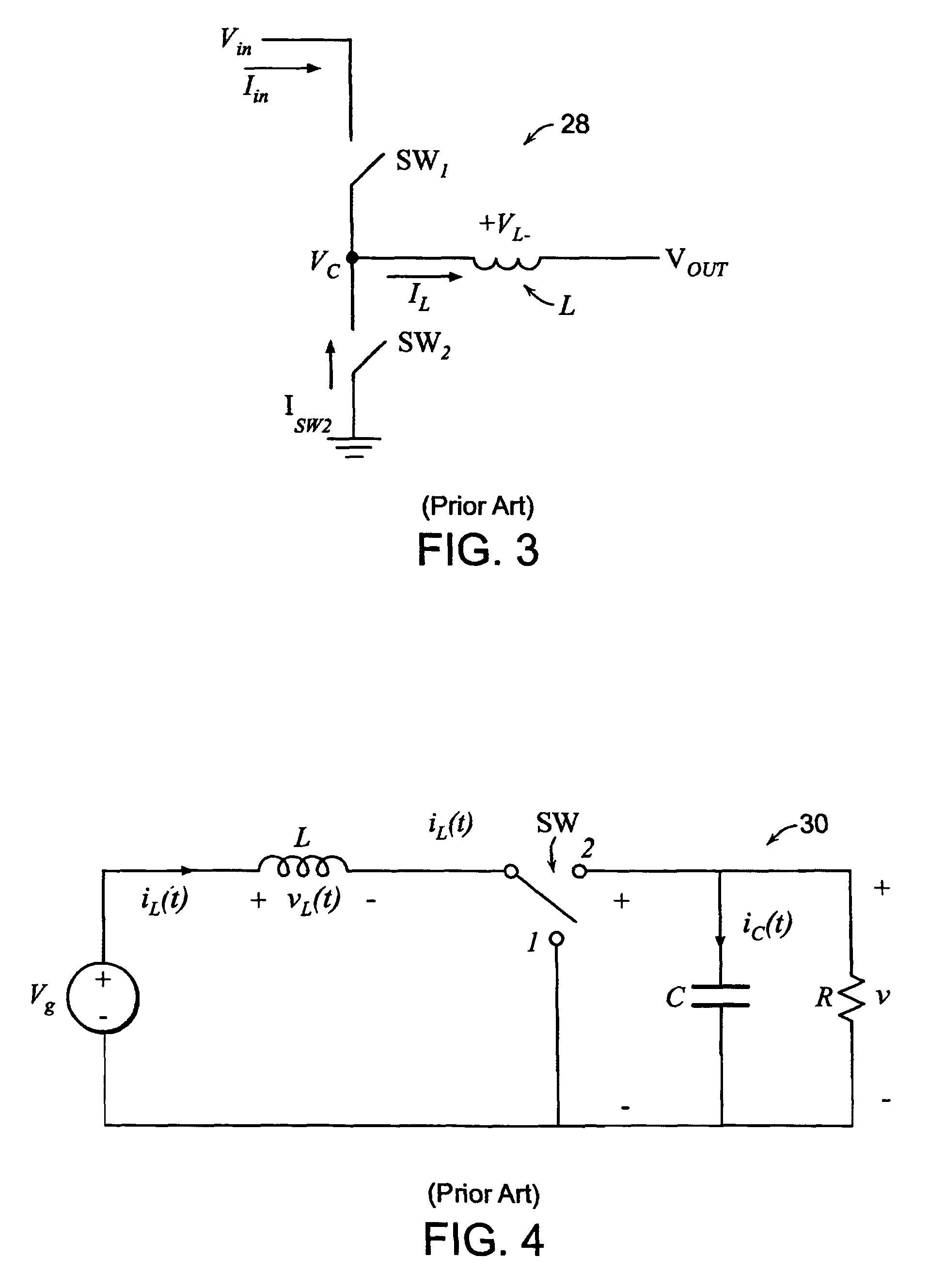Modulation control scheme for power converters in photovoltaic system charge controllers
a photovoltaic system and charge controller technology, applied in electrochemical generators, secondary cell servicing/maintenance, transportation and packaging, etc., can solve the problems of non-mppt charge controllers artificially limit power production to a sub-optimal level, under-utilization of the maximum power output of pv arrays, and significant increase in voltage, so as to reduce the rms (root mean square) current value, minimize the efficiency of series-connected dual active bridges, and reduce current current valu
- Summary
- Abstract
- Description
- Claims
- Application Information
AI Technical Summary
Benefits of technology
Problems solved by technology
Method used
Image
Examples
Embodiment Construction
[0063]A high voltage (HV) bidirectional maximum power point tracking (MPPT) charge controller 10 is illustrated diagrammatically in FIG. 1 incorporated in a photovoltaic (PV) system 12 as disclosed in the co-pending prior U.S. patent application Ser. No. 12 / 896,427 previously incorporated herein by reference. The PV system 12 comprises a high voltage (HV) photovoltaic array 14 including one or more photovoltaic modules or panels, a battery bank 16 including one or more batteries, a high voltage DC load 18, and the high voltage bidirectional maximum power point tracking charge controller 10 electrically connected to the PV array 14, the battery bank 16 and the DC load 18. The high voltage DC load 18 may include an on-grid or grid-connected inverter for converting direct current (DC) electrical energy into alternating current (AC) electrical energy suitable for being supplied or fed into a public utility grid 19 connected to the on-grid inverter, as in the case where the PV system 12 ...
PUM
 Login to View More
Login to View More Abstract
Description
Claims
Application Information
 Login to View More
Login to View More - R&D
- Intellectual Property
- Life Sciences
- Materials
- Tech Scout
- Unparalleled Data Quality
- Higher Quality Content
- 60% Fewer Hallucinations
Browse by: Latest US Patents, China's latest patents, Technical Efficacy Thesaurus, Application Domain, Technology Topic, Popular Technical Reports.
© 2025 PatSnap. All rights reserved.Legal|Privacy policy|Modern Slavery Act Transparency Statement|Sitemap|About US| Contact US: help@patsnap.com



